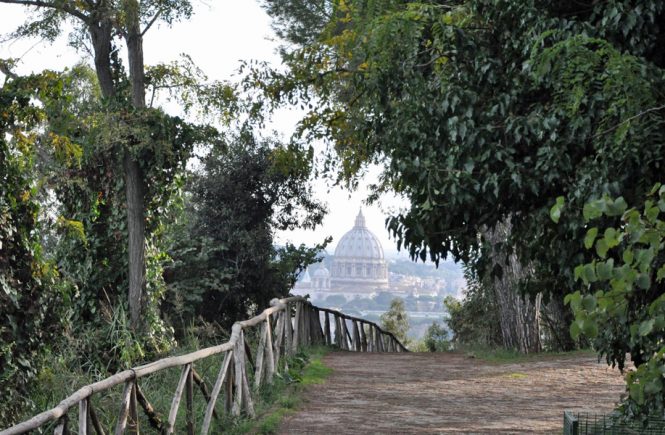
Palazzo Barberini, home both to the powerful clan that produced Pope Urban VIII and to paintings by greats like Raphael, Caravaggio, Titian and El Greco, hasn’t been a proper museum in years. Plans to create a central space for its collection were stalled for decades; until 2006, the palazzo even served as an administrative office for the Italian military. Paintings were split between various galleries across Rome, and even more of them remained in storerooms, hidden to the public.
That all changed just a couple of weeks ago.
I paid a visit to the newly-restored Palazzo Barberini today, and all I can say is: what a difference a few more rooms make.
(Note: This post was last updated with current information in April 2017).
The piece-de-resistance of the whole collection long has been Pietro da Cortona’s Triumph of Divine Providence (shown above), the fresco on the ceiling of the Grand Salon, mind-boggling for its size, its spot-on execution of trompe l’oeil, and its sheer over-the-top-ness. Under restoration for months, it’s now viewable in all its Baroque glory. A plus: Two comfy, long sofas let you stretch out on your back to take it in without hurting your neck.
But there are other jewels in the collection that are only now being shown off, too. Medieval pieces that had been undisplayed, including 14th-century scenes of crucifixions and sad-eyed Madonnas, now take up several rooms. A hall of landscape paintings includes several sweeping works by Paul Brill. And one room just opened to the public features a rushing fountain, a little piece of indoor theatricality in a time that loved everything unexpected and dramatic in art.
As well as the art itself, the museum experience has improved. A description in English and Italian greets you in each room, giving an overview of how the pieces link together (usually, by period and geography), and the flow of your visit is set up so that you progress from the 14th century all the way up until the 17th. And because there’s more room, the pieces aren’t as crammed in together.
With its new rooms, the Palazzo Barberini should take you about two hours to get through.
The Palazzo Barberini is located just steps from the Barberini metro at Via delle Quattro Fontane, 13. It’s open every day but Monday from 8:30am-7pm, making it an ideal early-evening stop. The entrance price is currently €10. For more on Palazzo Barberini, click here.
Also: a good reason to head “outside the walls,” books about Italy to put on your must-read list and an answer to the question: is Rome really safe?
If you liked this post, you’ll love The Revealed Rome Handbook: Tips and Tricks for Exploring the Eternal City, available for purchase on Amazon or through my site here! I’m also free for one-on-one consulting sessions to help plan your Italy trip.



4 comments
We were almost going to stop by the P. Barberini after our visit to the Borghese Gallery. But …thought it wouldn’t compare. Should have read this first. Oh, well.
Hey Andy,
In all honesty, if I had to choose between Borghese and Barberini, it’d still be the Galleria Borghese that wins, hands-down, for Rome’s most pleasant experience of some of its best art. But the renovations at Barberini have bumped it up on that list. You’ll just have to check it out when you come visit us again 🙂
Thanks for your comment!
I enjoyed the Borghese, for it had extra wide large padded benches (couches with no backs, I guess) such that you could lay back and enjoy the ceiling 🙂 I think it’s a super idea for any museum with pieces to admire on the ceiling…
The Barberini will be on my list for next time! 🙂
Hi Jessica,
Glad to hear you liked the Borghese – it’s one of my favorites. You’ll just have to come back to see the Barberini soon!